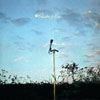 Deeming this meeting of minds a classic is certainly beyond cliché at this point, though to some degree the album still does not receive the recognition garnered by other ventures that the collaborators were individually involved in. Yet Bureau B, whose recent digs through the archives have revealed and shared some true gems of late, has graced the world with the album again, and its flow and thoroughness of conception is as apparent now as ever. There is a dignified sense of space here that fuels these compositions and promises them a life far beyond the 30+ years already lived by them.
Deeming this meeting of minds a classic is certainly beyond cliché at this point, though to some degree the album still does not receive the recognition garnered by other ventures that the collaborators were individually involved in. Yet Bureau B, whose recent digs through the archives have revealed and shared some true gems of late, has graced the world with the album again, and its flow and thoroughness of conception is as apparent now as ever. There is a dignified sense of space here that fuels these compositions and promises them a life far beyond the 30+ years already lived by them.
Of course with a cast like this it is tough to go wrong, and this meeting feels far less like a collaboration between Hans-Joachim Roedelius, Dieter Moebius and Brian Eno than it does a logical meeting of minds that could well have lasted far beyond the two albums the trio would release together. Often touted as the first German ambient album, the release reads far more like an instrumental soundtrack whose purpose is not so much to drift into the background as it is to elevate the occurences happening around it.
This is apparent from the first track alone, the classic "Ho Renomo," which features Can bassist and conceptual rocker Holger Czukay's bobbing repetitions fueling the effervescent electronic and piano drift surrounding it. Each member's contribution can be clearly deciphered, a remarklable synthesis of sounds and styles that feels like all of them without sounding entirely like any of them.
The album's strong point is how effortlessly it moves from piece to piece, careening into outer bounds on the following "Schone Hande," whose clear melody line feels as fragile as the cloud-like atmospherics and hydrolic drops surrounding it. Like everything here, the work seems in a kind of shifting stasis, hovering above the floor without ever rising too high. The sorrowful "Steinsame" has more than its share of Eno's recognizable footprints, as does the following "Wehrmut," but the feel is lighter and slightly more compositional, with a subtle momentum where Eno would often let the piece stand. Elsewhere, "Mit Simaen" and "Die Bunge" read like true Cluster tracks, while the rhythmic chord progression and thudded bongos of "Selange" sound like neither.
Whereas much of the album uses its broad instrumental palette quite subtley, the sitar of Okko Bekker on "One," which also features electronic groundbreaker Asmus Tietchens, is a raga tune for the elctric age, the sitar subtly maneuvering the synthesizer dips and thumb piano pulses. It is a fitting and comparably rowdy setup for the plan closer "Fur Luise," whose piano opening invites a sensitive and melancholy drawing that perfectly suits the album's overall mood, ending it with just the question mark necessary.
After all these years a lot of these now archaic electronic tactics should sound outdated but in the hands of authentic musicians such as these—whose senses of color, invention, and discriminate choice guide the proceedings with such care—the results are far from outdated. It seems instead that these pieces, though not necessarilly directly influential toward any specific genre, have become so engrained in the way that music is conceived today that these works make as much sense now as they ever have. It has become second nature.
samples:
Read More

